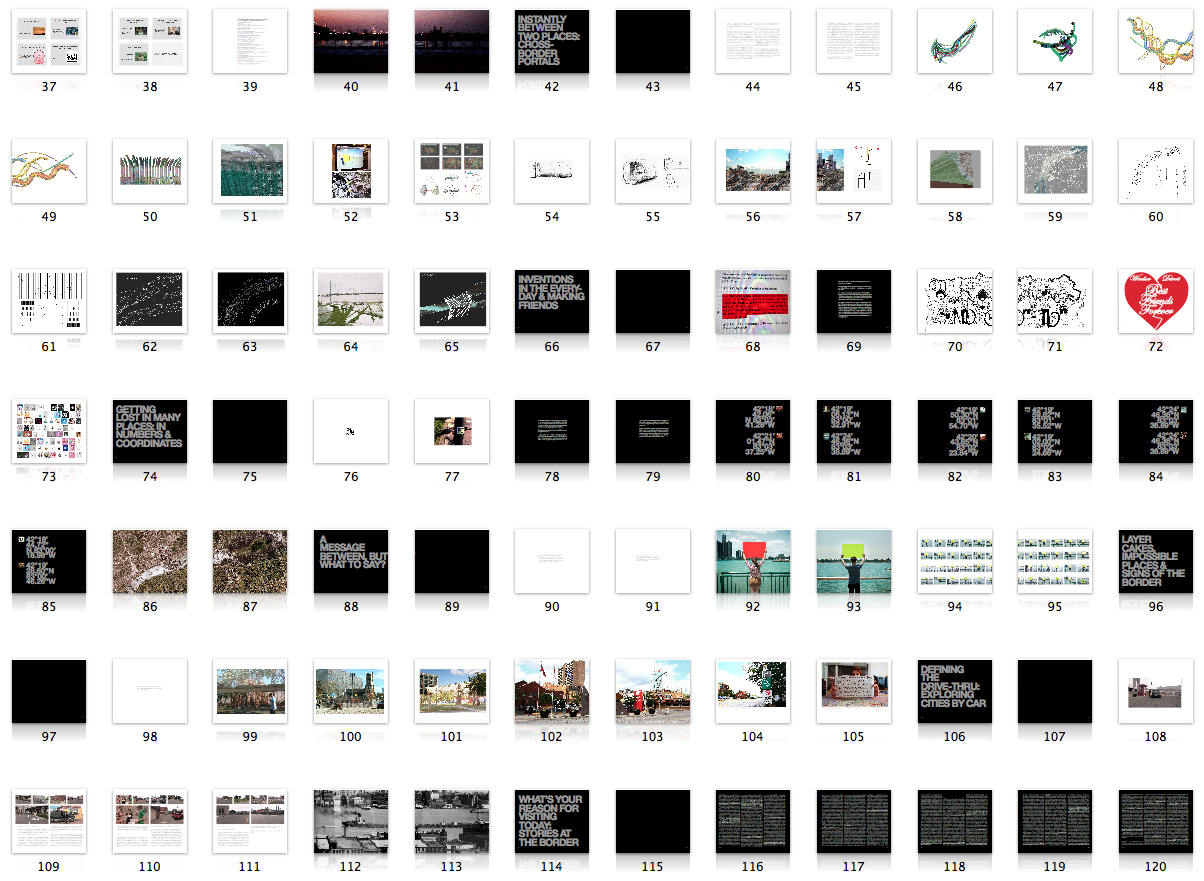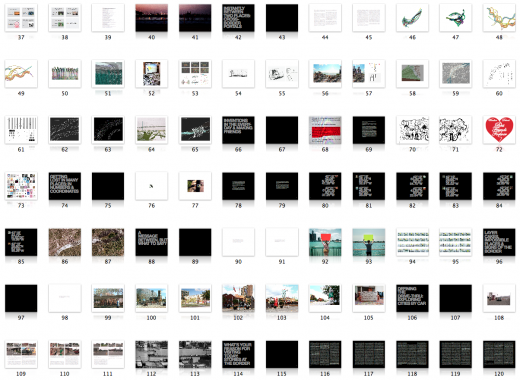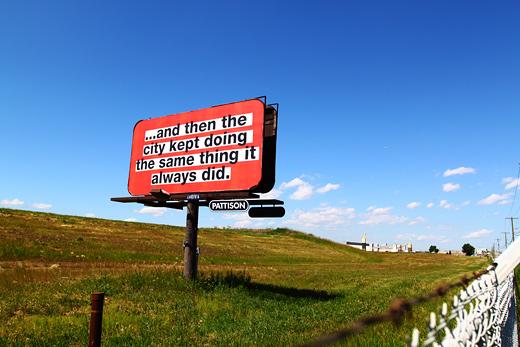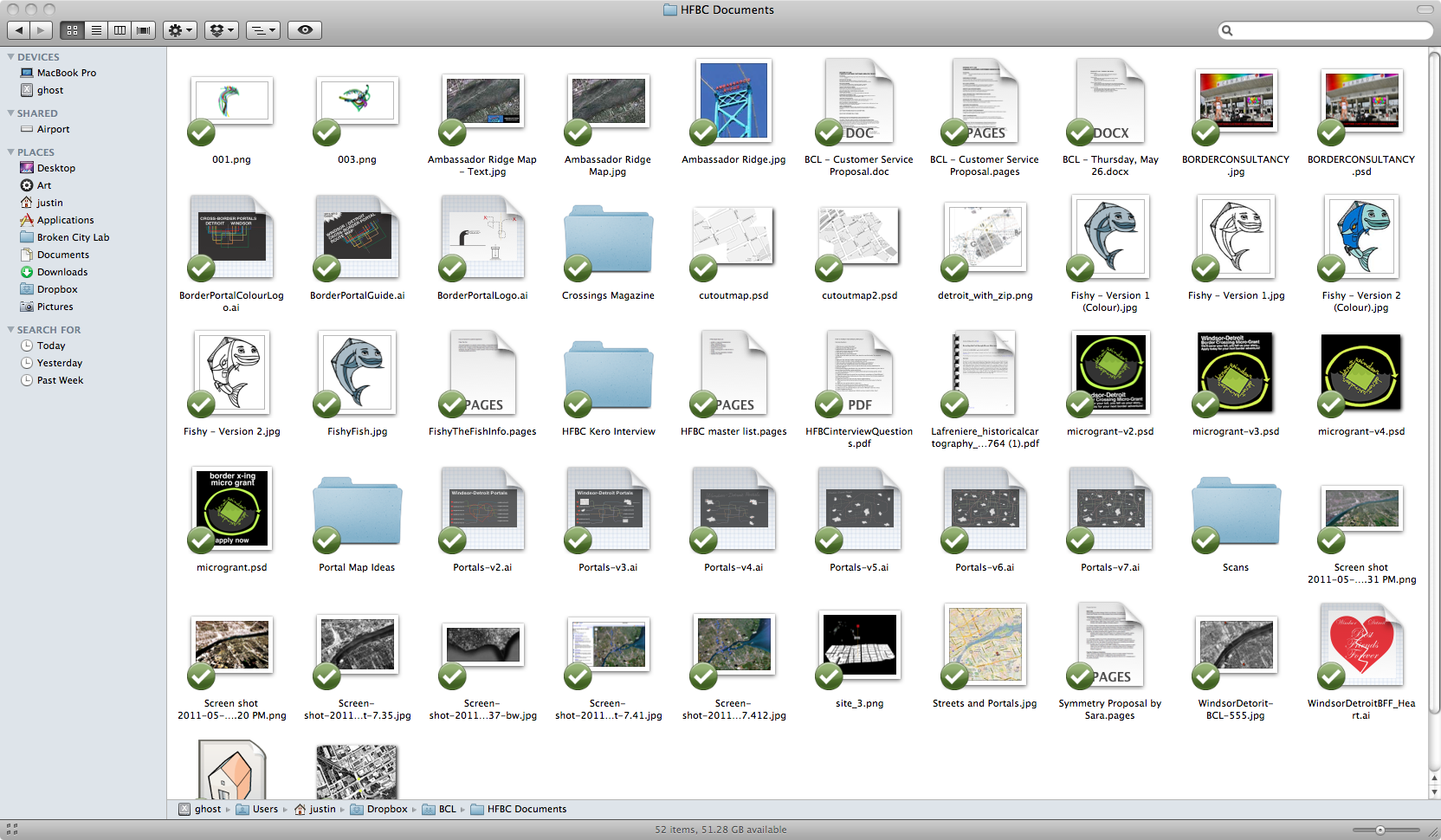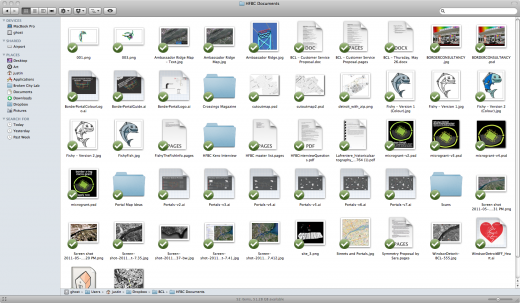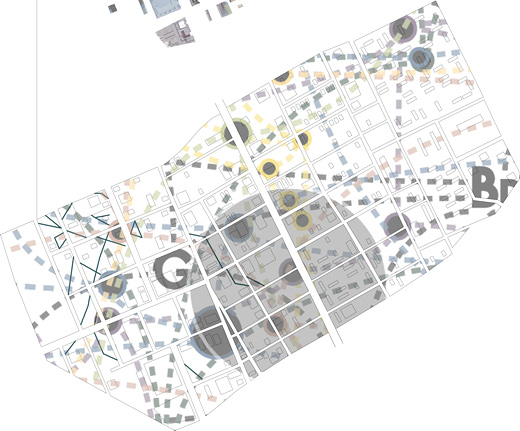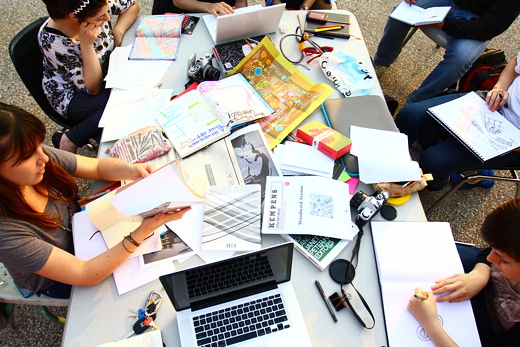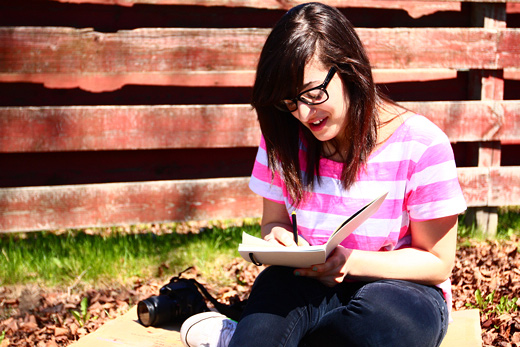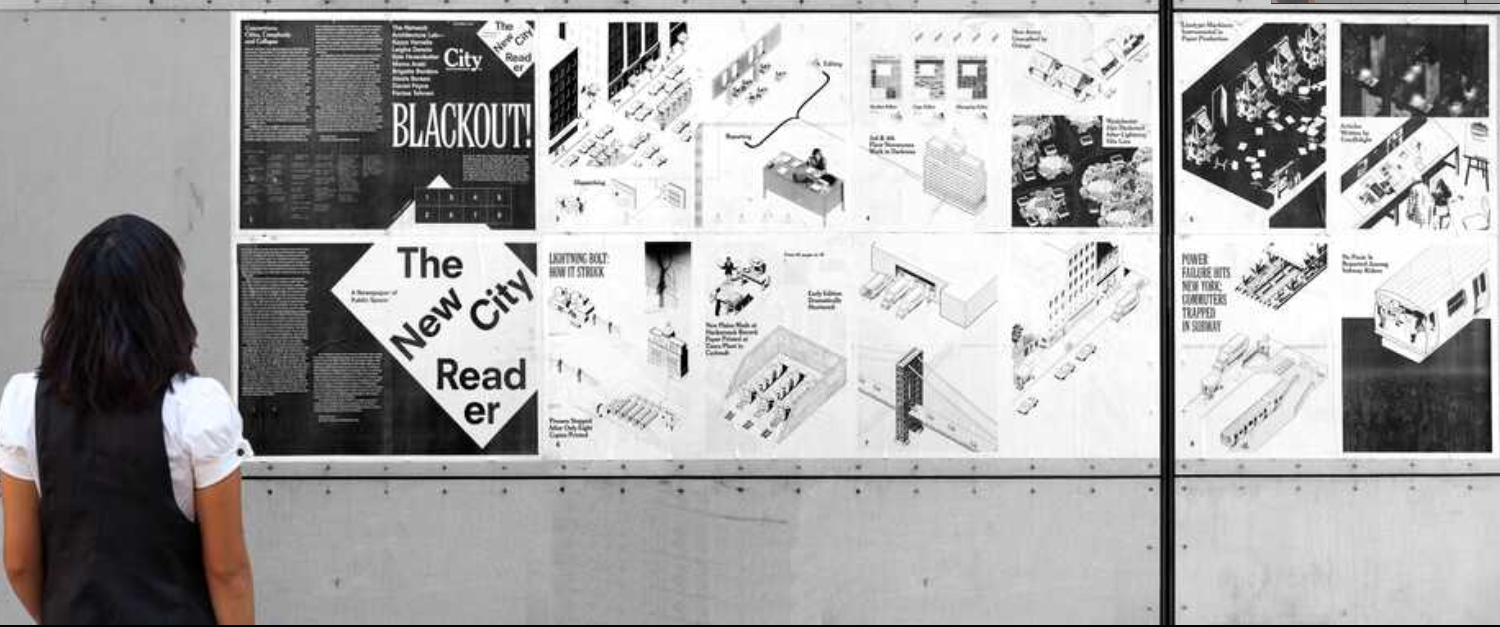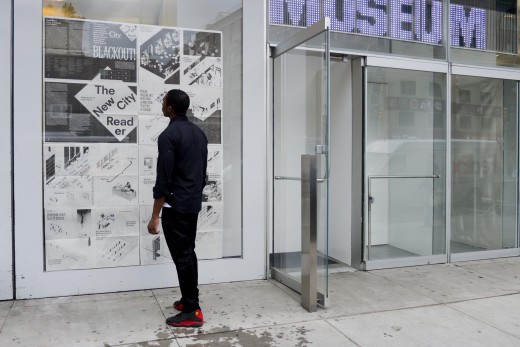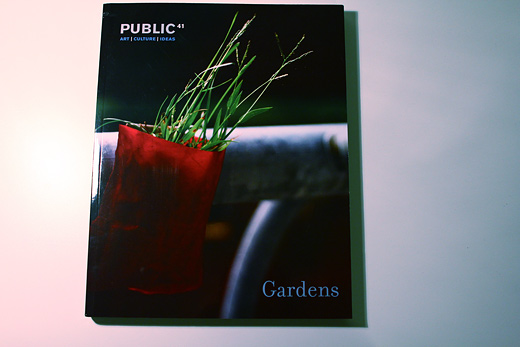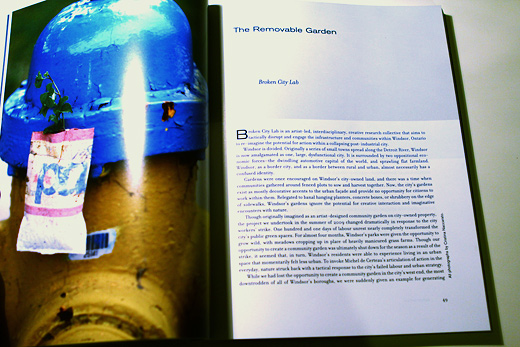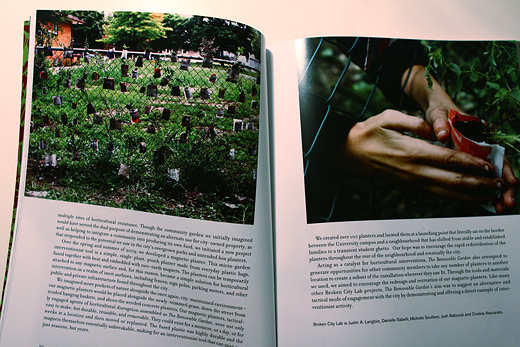Months of work and research culminated in a 3am submission to Blurb to print our How to Forget the Border Completely publication. It’s about 150 pages long. I’m really happy with this, and I can’t wait to get it back in print. Above, a screenshot of some of the pages in the PDF.
In terms of distributing the content, it’s now really difficult to imagine parting it from this kind of collected format. We’ll offer the book for sale through Blurb, but maybe a PDF as well? Hard to say, it’s 70mb, a bit of an unruly download I suppose. The version I ordered was excessively expensive, but it seemed only fitting to get at least a few copies with a nice image wrap, matte pages, and no Blurb logo.
Anyways, huge thanks to my BCL colleagues and the always generous Lee Rodney and Tom Provost for working with us on this. On a side note, the more I work with InDesign, the more I love it.
It’s election day in Ontario, you should vote.
How to Forget the Border Completely is generously supported by the Ontario Arts Council.

